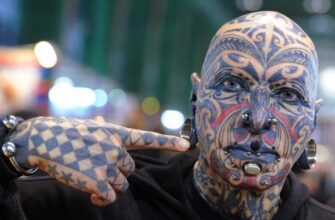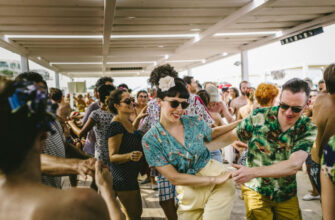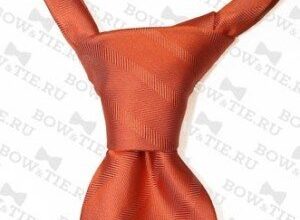Smoking cigars can hardly be called just a habit. It is rather a certain life philosophy of people who know what they want, are used to achieving their goals and can afford not to rush anywhere. A Cuban cigar is one of the elements of the image of a successful person, and its choice and smoking is a whole ritual. Today Cuba exports about 80 varieties of cigars. Let's try to understand this variety and find out where to start our acquaintance with Cuban cigars.
History of Cuban cigars
The first written records of the unusual habit of the indigenous people of Cuba date back to the fifteenth century. Columbus and his companions described smoking cigars as 'drinking smoke'. However, archaeologists claim that the Indians learned how to make these fragrant bundles much earlier. In the seventeenth century, the then law banning the export of tobacco from Cuba was abolished, and in the eighteenth they were already known in all European countries.
 Vintage picture with box of cigars
Vintage picture with box of cigars
At the same time, the first myths about Cuban cigars began to appear. For example, that they are made exclusively by young mulatto women, and they twist the sheets on their own hips. In fact, rolling a cigar requires a lot of physical strength, and in Cuba it is traditionally a man's job.
At the French court, tobacco was considered almost a universal medicine – it was recommended for migraines, toothaches, and digestive disorders. Even pregnant women smoked – doctors believed that this would help them not gain excess weight.
Cigars appeared in Russia during the reign of Catherine the Great. By the way, she was the first of the famous women who decided to smoke tobacco in public. The peak in popularity of cigars came at the beginning of the last century; they were loved by representatives of various social strata – from bohemians and intellectuals to gangsters and smugglers.
After the revolution, cigars were the privilege of the elite, but in the sixties and seventies they again became available to the population. On average, a good cigar in the USSR could be bought for fifty kopecks.
How Cuban Cigars Are Made
Cuban cigarettes have no analogues in the world due to the unique climate of the island. Heat and high humidity allow to preserve a range of aromas in tobacco leaves. The tobacco is grown and prepared without the use of chemicals from selected seeds, the leaves are harvested by hand. They are dried in sealed bags, cleaned, sorted out and sent for blending. After mixing, the tobacco enters the factory, where the leaves are trimmed and prepared for curdling.
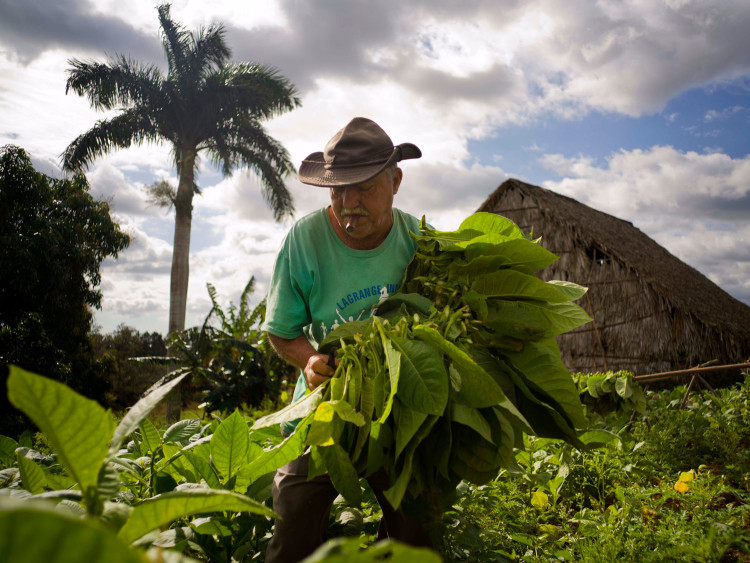 How tobacco is grown for Cuban cigars
How tobacco is grown for Cuban cigars
The cigar is based on three leaves – one of them provides aroma, the other two – softness and good burning. They are wrapped on top with a special pressed sheet. After that, the cigars are sorted, labeled, put into special boxes and sent to storage in special warehouses. Cigars do not tolerate temperature extremes and storage violations, so it is worth buying them only in reliable places.
Products made entirely by hand must be labeled 'Totalmente a Mano'.
How to choose a Cuban cigar
The 'professionals' say that they start enjoying the cigar already at the stage of its selection. The variety is chosen according to its mood and depending on the society where it will be smoked, they are able to 'by eye' appreciate the tenderness of the leaf and the skill of the manufacturer. It is much more difficult for beginners to decide on the purchase of their first cigar.
It is recommended to start acquaintance with Cuban cigars with varieties that have strong, but unobtrusive flavors with a mild aroma. The strength of cigars is marked on a scale from 1 to 3. According to the color of the wrapper, some conclusions can also be drawn – in not strong and sweetish ones, it is usually light green, with a delicate aroma and rich taste – reddish brown, and in spicy and strong ones – almost black . This is only valid for hand-made cigars; for factory-made machine-made cigars, the wrapper can be painted in any color.
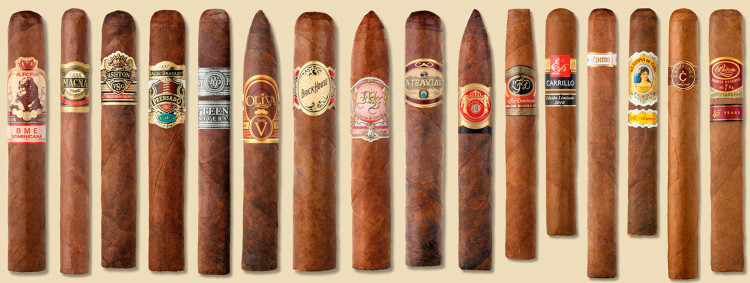 There is a huge variety of cigars, which are divided by strength, format and color.
There is a huge variety of cigars, which are divided by strength, format and color.
Good cigars should have an even, smooth, slightly shiny surface of an even color without spots or streaks. With a slight squeeze between the fingers, cigars do not crunch or sag, their elasticity is felt. The smell of good cigars cannot be too harsh or intensely herbal.
The diameter of cigarettes is measured in inches and must be the same as indicated on the box. In general, there are over 20 cigar formats. Thicker cigars have a richer flavor and aroma, but thickness usually does not affect strength. It is best not to start with the thinnest (RG -30) or very thick cigars, but in general it all depends on personal preference.
When examining the packaging, pay attention to the warranty seal in the corner. It is usually rectangular and green in color. On the back of the package there must be a stamp indicating the place and date of manufacture. Expensive cigars should be in a cedar box, covered with high-quality varnish and protected by cardboard packaging. For individual packages on Liberty Island, tubes made of aluminum or cardboard are used; everything that is offered in glass is a fake.
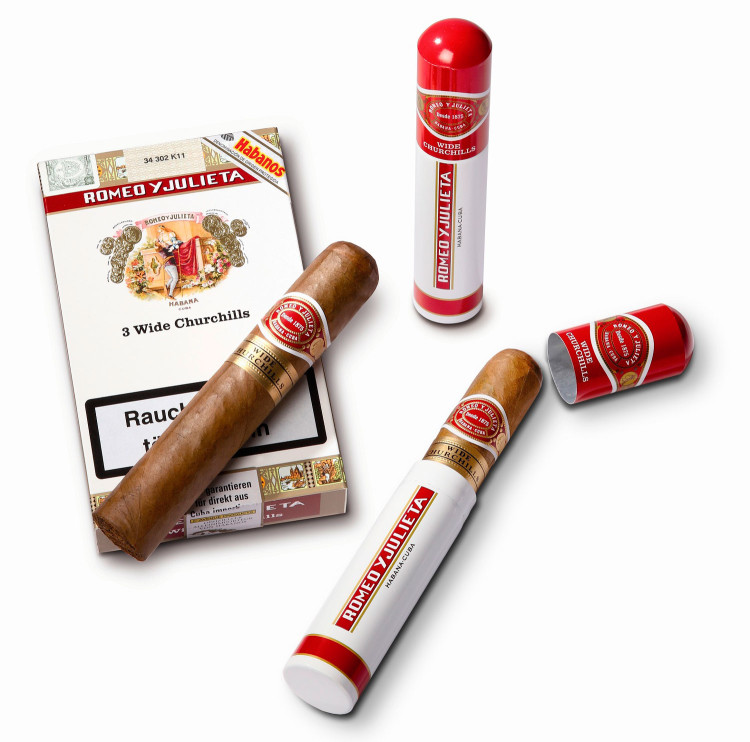 Cuban cigars Romeo y Julieta individually packed in aluminum packaging
Cuban cigars Romeo y Julieta individually packed in aluminum packaging
Prices for different varieties and brands vary significantly, the cheapest Cuban cigars officially cost about five dollars, the most expensive 'Gurkha Black Dragon' – more than one thousand hundred dollars per unit.
But a good cigar doesn't have to be expensive. For example, the popular Robusto variety from one of the most famous Cuban manufacturing companies, COHIBA, can be purchased for about four hundred dollars per box, one costs about fifteen. In Russian stores, the price increases two to three times.
 Cigars LA GLORIA CUBANA
Cigars LA GLORIA CUBANA
Cigars by LA GLORIA CUBANA offer a range of varieties with unobtrusive light aromas, HOYO DE MONTERREY are distinguished by smooth burning and soft flavors with floral notes. For beginners, you can also try JUAN LOPEZ cigars – they smell good, have a sweetish taste, and some of the varieties are weak. In general, among Cuban manufacturers there is something to choose from, but do not forget that more than half of the 'Cuban cigars' sold in Russia are counterfeit. So it is worth either purchasing them from an official distributor, or going to Cuba for them.
Cigar smoking culture
Smoking a cigar is a business that takes time. A certain sequence of actions during this process can provide a sense of stability and calmness. But for this you need to know this sequence.
The first thing to do after choosing a cigar from the box is to cut off the 'cap' (the sealed end). For this, cutters or cigar scissors are used. The tip is cut so that a thin ring remains from the cap. Do not use kitchen knives or other household items for this, as they can tear the wrapper leaf and ruin the cigar. It is customary to remove the cigar bow before smoking, but this is optional.
The cigar is usually lit with matches or gas lighters. Do not use gasoline lighters, as this can spoil the taste of the cigar. The cigar should be set on fire slowly, preheating it over the fire. After warming up, the tip of the cigarette is set on fire by turning it over the flame. When it gets smoldering, you can try to pull the smoke, while not stopping to turn the cigar so that it ignites evenly. You can check this by blowing lightly on the tip.
Cigar smoke is not inhaled, but rolled in the mouth. Some lovers simply enjoy the aroma of the cigar while it smokes and do not smoke it at all. It is better not to shake off the ashes abruptly, as the cigar may go out. In society, it is considered undesirable to smoke a cigar to the end, smoke two-thirds. After smoking, cigars should not be extinguished or thrown away; they are left in the ashtray to grind. If the cigar has gone out and did not have time to cool, it is permissible to light it again.
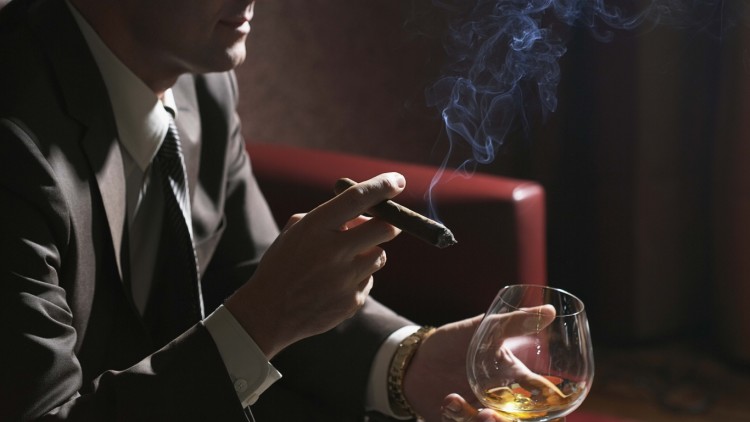 Traditionally, smoking cigars is combined with hard liquors such as whiskey, brandy, bourbon or rum.
Traditionally, smoking cigars is combined with hard liquors such as whiskey, brandy, bourbon or rum.
Traditionally, you can drink coffee with a cigar, whiskey, brandy, bourbon and rum from spirits. In general, a simple rule should be followed – a cigar and a drink should complement each other, and not interrupt. If you want to enjoy the taste of a cigar, and not alcohol, port, grog, mulled wine will do. Some people like the combination of light cigars and unsweetened fruit juices.
However, there are no strict rules and this is a personal matter of the taste of each aficionado. By the way, Winston Churchill, a well-known connoisseur of Cuban cigars, said about them like this: “My tastes are extremely simple. I am easily content with the best. '
Finally
In conclusion, I would like to remind you that any smoking damages the human body. But if you choose between regular tobacco, processed in factories with chemical compounds, e-cigarettes and Cuban cigars, cigars are probably the least harmful. In addition, cigars are not a daily commodity, therefore nicotine dependence on them is formed more slowly than on other tobacco products. Therefore, if you still smoke, then only Cuban cigars.


